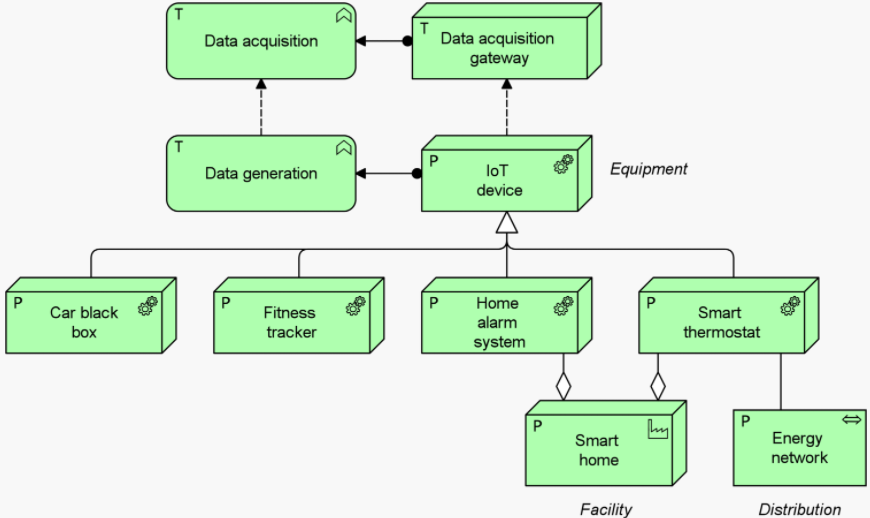In a previous blog on the ‘Digital Customer Intimacy’ strategy of our example insurance company ArchiSurance, we outlined that they intend to use more detailed customer data to improve customer interaction and satisfaction, and to determine customized insurance premiums. To this end, they want to use the Internet of Things, acquiring data from smart, connected devices such as personal fitness trackers, black boxes in vehicles, home automation gateways, fleet management systems, in-store RFID devices, or smart building sensors.
The figure below shows their intention; the insurance premium of individual customers is based in part on the data they acquire from different devices. This data is processed to create customer-specific profiles that are input to the calculation of their insurance premiums. At an aggregated level, this data is also used to develop new kinds of insurance products and to assess and adjust the overall risk exposure of the company.

Figure 1. Data-driven insurance.
To support this, ArchiSurance establishes a data acquisition gateway that can connect to all kinds of smart devices that generate relevant data. These devices are modeled as Equipment in the new ArchiMate 3.0 standard. In turn, equipment can be located at a Facility; in the example below we see a Home alarm system and Smart thermostat as part of the Smart home. Finally, the Smart thermostat itself is connected to the Energy Network, modeled as a Distribution network in ArchiMate.

Figure 2. Data acquisition with IoT devices.
The implementation of ArchiSurance’s data acquisition is based on a microservices architecture. IoT devices can register themselves with the gateway via a REST API. It also uses services on the API to notify the gateway of the data it acquires. This gateway is supported by a Platform-as-a-Service (PaaS), providing services for deployment, integration, service lifecycle management, accounting, security, load balancing, storage, virtualization and more. For each registered device, an instance of the Data acquisition functionality will run in a container. Note that in architecture models, we usually do not describe the individual instances of devices, but rather focus on their types. This is shown in Figure 3, which also exhibits the improved grouping concept of ArchiMate 3.0 that aggregates its contents and allows relationships from and to the group.

Figure 3. IoT device services.
These examples show how the integration between physical and information technology (that is now supported by ArchiMate 3.0) can be used to model innovative technologies such as the Internet of Things, Industry 4.0 and Cloud Computing. The full traceability within and across different models, as supported by Enterprise Studio, will allow you to relate these technologies to the business processes and products they support, and from there to the strategic capabilities, business outcomes and business models of the organization. This provides you with excellent visibility of the potential opportunities and strategic impact of innovations on your organization.
In future blogs we will show more examples of this. Stay tuned for more!